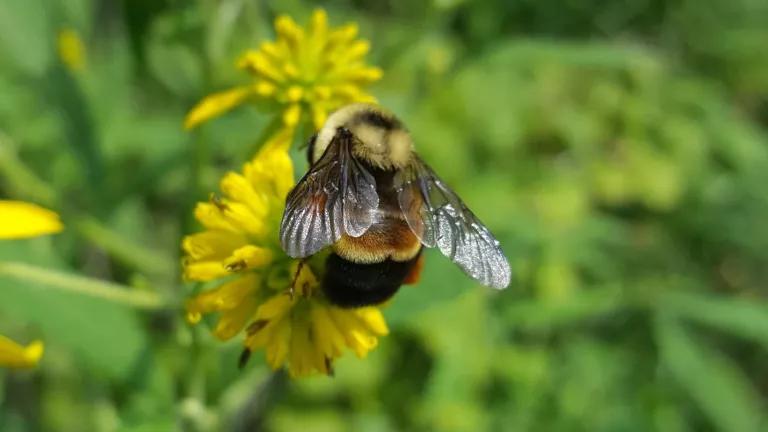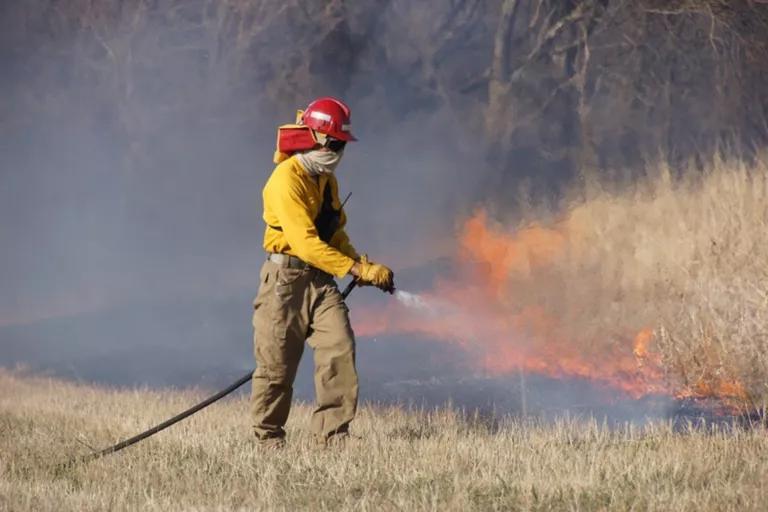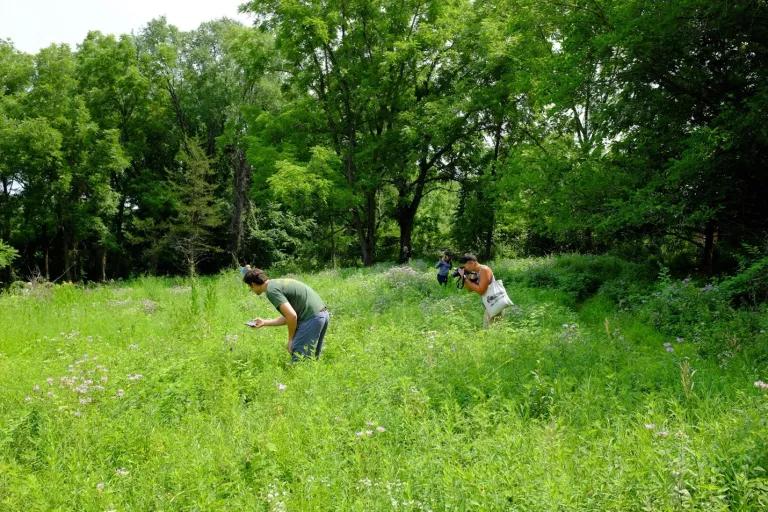Iowa Group Protects Bee Habitat Amid ESA Battle
While NRDC and our partners are in court fighting to win habitat protections for the endangered rusty patched bumble bee, the Bur Oak Land Trust is also taking matters into its own hands.

A rusty patched bumble bee identified at the Turkey Creek Nature Preserve, a property managed by the Bur Oak Land Trust.
NRDC alum Paula Tartell was the primary author of this blog post.
NRDC and partners continue to battle in court to challenge the U.S. Fish and Wildlife Service’s failure to designate critical habitat for the endangered rusty patched bumble bee—a once-critical pollinator that is now gone from 87 percent of its native range. While the Service shirks its responsibilities under the Endangered Species Act (ESA), local groups are picking up the slack to protect and restore the rusty patched bumble bee’s habitat.
NRDC member Jason Taylor is the executive director of the Bur Oak Land Trust, which works to restore rusty patched bumble bee habitat in the 12 (and counting) properties it owns and maintains across approximately 500 acres predominately in Johnson County, Iowa. Taylor believes the Service’s failure to designate critical habitat for the rusty patched bumble bee undermines its survival: “It’s not the mere title of endangered that’s going to protect the rusty patched bumble bee. Bees are being eradicated because their habitat is going away, and the best thing to do for the rusty patched bumble bee is protect its habitat.”

Jason Taylor performing a controlled burn.
Taylor and his colleagues at the Land Trust seek to advance biodiversity by protecting resilient landscapes in Iowa, a state where the majority of the land has been altered due to poor post-colonial agricultural and land management practices. Taylor developed an interest in the rusty patched bumble bee in 2018, soon after he learned it was listed as a federal endangered species and identified one in the prairie he planted in his backyard. After reading about this vulnerable species and the drastic reduction of its habitat across the Midwest, Taylor worked through the Land Trust to develop rusty patched bumble bee habitat restoration projects across its properties and identify other land that might contain species populations. Taylor hoped that targeted efforts to protect this most vulnerable bee species would benefit Iowa’s ecosystems and its roughly 300 native bee species.
Bur Oak Land Trust’s efforts to protect the rusty patched bumble bee focus on restoring or improving habitat for queen bees, which are responsible for perpetuating the entire species. As is the case with many species of bumble bee, a single hibernating queen is responsible for carrying the entire colony through each winter. By protecting this habitat, Taylor’s organization doesn’t just help the bee; it provides habitat for countless species that rely on these ecosystems.

Trained volunteers conduct a survey for RPBBs in Johnson County, Iowa.
Taylor’s organization is powered by community-driven science and trains volunteers to identify the rusty patched bumble bee on Land Trust properties and elsewhere in Iowa. Taylor’s goal is to ensure Iowans are able to identify the rusty patched bumble bee. Volunteers have already found the bee on five different Land Trust properties, among other nearby locations.
Taylor’s work is grounded in his firm belief of the bee’s ecological importance: “Within any given ecosystem, everything is interconnected. There is no one component of an ecosystem that is not doing its job. We just don’t fully know, as humans, what that job is… But we’re the ones causing [pollinator losses], so it’s our responsibility to identify it, and to stop it.”
Through his work with Bur Oak Land Trust, Taylor shows us how community science and local land management initiatives can uplift a species that has been jeopardized by exploitation of the land. Now, the Service must also do its part by providing the rusty patched bumble bee’s habitat with much-needed legal protections. The future of the bee—and its ecosystem—may depend on it.
The views expressed herein by Jason Taylor are made in his individual capacity and are not made on behalf of the Bur Oak Land Trust.



